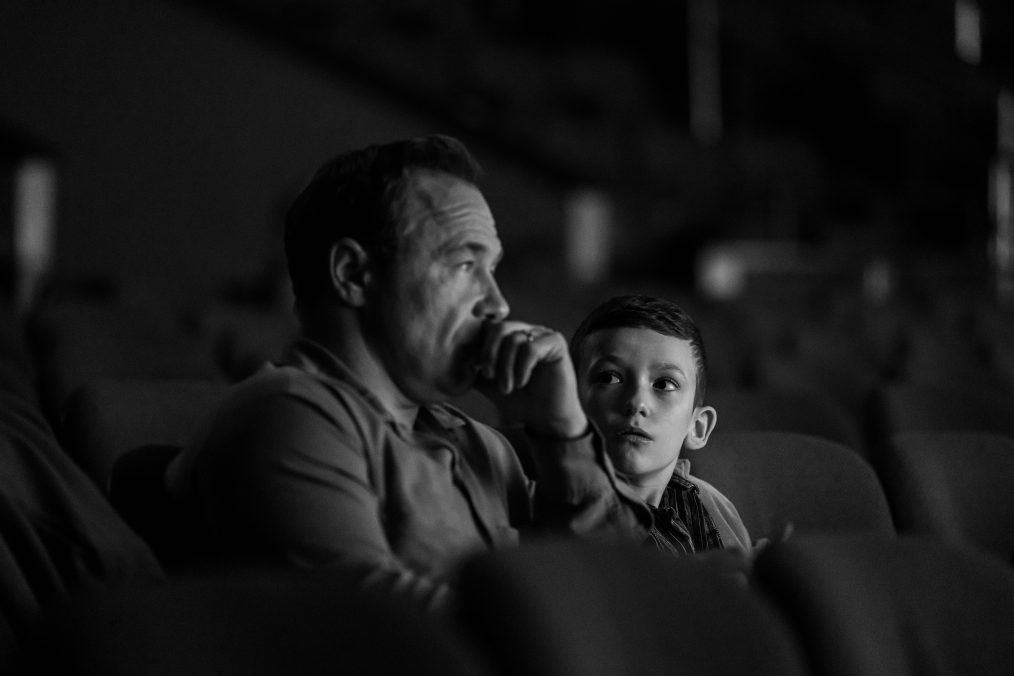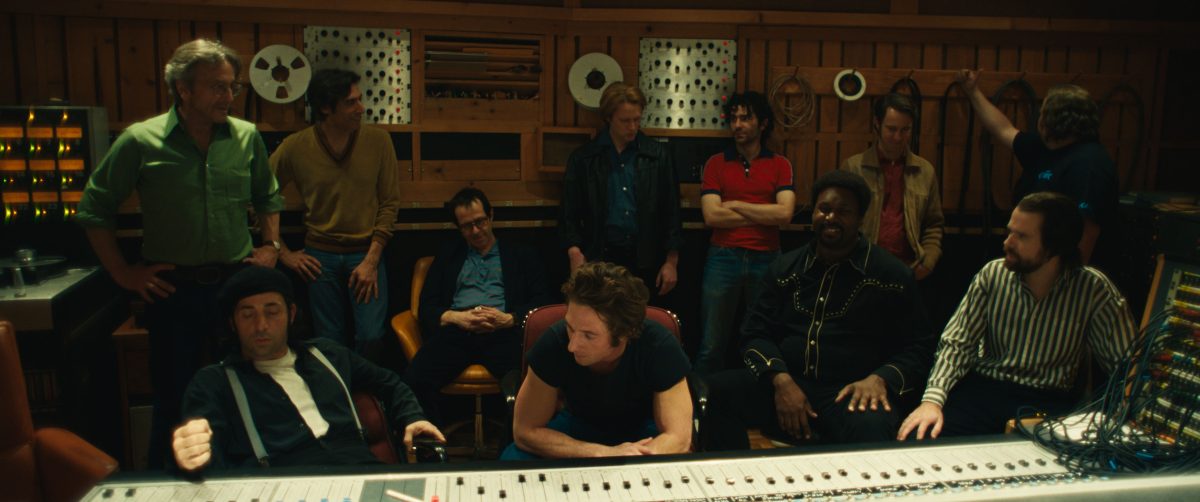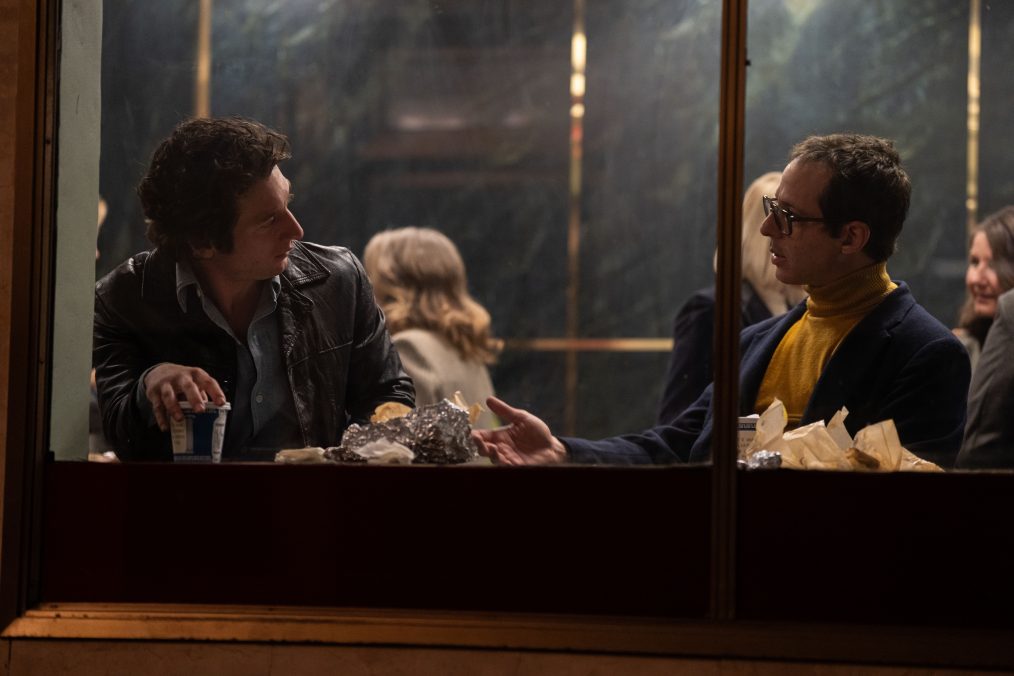A Story Between the Songs

If you’re expecting a traditional cradle-to-stage biopic, Springsteen: Deliver Me from Nowhere might surprise you. Instead of tracing Bruce Springsteen’s entire life or career, Scott Cooper’s film zooms in on a defining moment — the creation of Springsteen’s haunting 1982 album Nebraska. It’s a period piece not about fame but about faith, isolation, and the search for purpose, framed through the lens of an artist on the edge of exhaustion and discovery.
Jeremy Allen White delivers a powerhouse transformation as Bruce. The film follows him during a time of personal and creative reckoning, weaving together his present-day struggles with memories from a painful childhood. His trauma and complicated relationship with his father, Doug (Stephen Graham), fuel both his demons and his music.
A Portrait of Pain and Perfection
The film opens not with stadium lights or roaring crowds, but with silence. Cooper takes us into Bruce’s New Jersey bedroom, where the artist begins recording what would become Nebraska — a raw, acoustic reflection of American despair. With nothing but a 4-track recorder, Bruce captures voices of lost souls searching for meaning, mirroring his own inner battle.
White channels that loneliness with precision. His performance is magnetic, stripped of ego, and full of physical and emotional intensity. You feel his exhaustion, his creativity, and his anxiety colliding in every scene. Watching him perform is like watching someone fight their own shadow — and sometimes lose.

His abusive yet complicated bond with his father shapes the heart of the story. The film revisits moments from Bruce’s youth, using black-and-white cinematography to separate timelines. While this visual choice doesn’t always land emotionally, it does give the audience an abstract look into his fractured psyche — moments where the adult Bruce almost haunts his own childhood.
Isolation, Inspiration, and the Making of Nebraska
Springsteen: Deliver Me from Nowhere is at its strongest when it captures the recording process itself. We see Bruce experimenting with the intimacy of home recording — the soft hum of his 4-track, the imperfections he refuses to erase, the relentless pursuit of authenticity. When the film moves to 914 Sound Studios in Blauvelt, New York, where he tries to recreate that same bedroom sound, it becomes a fascinating meditation on artistic control.

Cooper understands that music is more than melody — it’s memory. Bruce’s isolation becomes both his peace and his prison. The film explores that fragile balance between solitude as therapy and solitude as torment. His refusal to let anyone change the sound of Nebraska is more than creative stubbornness; it’s a cry for ownership over his own story.
The Power of Support and the Weight of Emotion

While Jeremy Allen White carries the film, the supporting cast gives him a powerful ensemble to work with. Jeremy Strong is remarkable as Jon Landau, Bruce’s long-time manager and emotional anchor. His steady presence and sharp dialogue make every scene between them feel lived-in and authentic. Strong plays Landau not just as a professional ally but as the friend who helps Bruce face himself.
Paul Walter Hauser continues his impressive streak of scene-stealing performances as Mike Batlan, Bruce’s guitar tech and loyal companion. Even with limited screen time, Hauser makes Mike feel fully realized — a grounded, genuine presence who represents the quiet strength behind the chaos.

Odessa Young brings warmth and tenderness as Faye, offering Bruce a fleeting glimpse of stability and human connection. Her chemistry with White adds a softness the film desperately needs amid its darker themes.
By the third act, everything starts to click emotionally. Bruce begins to face the depression and anxiety that have consumed him, turning pain into catharsis. The sessions, therapy, and honest conversations with those around him help him rediscover what music was always meant to be: an act of healing.
The Man, the Music, and the Message

One of the film’s most effective scenes recreates Bruce recording “Born in the U.S.A.” — a song meant for Nebraska but transformed later into a cultural anthem. In moments like these, the movie allows fans to experience his artistry firsthand, not just as an audience but as participants. You feel the music; you understand the cost of it.
Throughout the film, references to Sam Cooke remind us that Bruce’s search for peace was universal — that every artist, no matter how legendary, is just another soul trying to find grace in the noise.
But beneath the music and fame lies the real message of Deliver Me from Nowhere: the power of healing and therapy. The film doesn’t romanticize isolation; it exposes it. Bruce’s instinct to withdraw from the world, to push away those who care for him, mirrors a pattern that so many people face when confronting pain or trauma. Through therapy, reflection, and the unwavering support of those who never gave up on him, Bruce begins to realize that solitude isn’t strength — connection is.

The movie highlights that therapy nor help isn’t weakness or surrender, but a path toward self-awareness and repair. It’s about confronting what hurts, learning to forgive, and rebuilding what’s been lost. By the final act, when Bruce finally stops running from his past, it’s not the music that saves him — it’s the courage to open up.
That’s what makes Springsteen: Deliver Me from Nowhere so quietly powerful. It’s not just about how Nebraska was made; it’s about how Bruce Springsteen started to heal.
Final Verdict: Jeremy Allen White is Electric
Springsteen: Deliver Me from Nowhere isn’t my favorite film of the year, but it’s one that lingers. It’s slow, introspective, and emotionally draining in the best ways. While not every stylistic choice works, the performances carry it through.

Jeremy Allen White is extraordinary — his transformation is complete, not just in look or sound, but in spirit. You believe him as Bruce. His guitar work, his posture, and even his silences feel authentic. This is the kind of performance that transcends imitation and becomes embodiment.
Odessa Young, Jeremy Strong, and Paul Walter Hauser all elevate the film, making it more than a portrait of one man — it’s a reflection of everyone who’s ever had to face their past to find their future.
Editor-in-Chief | Owner
I’m a dedicated aficionado of all things movies, pop culture, and entertainment. With a passion for storytelling and a love for the silver screen, I’m constantly immersed in the world of cinema, exploring new releases, classics, and hidden gems alike. As a fervent advocate for the power of film to inspire, entertain, and provoke thought, I enjoy sharing my insights, reviews, and recommendations with fellow enthusiasts.

